Captured Memories: The Art of Zelda's Narrative
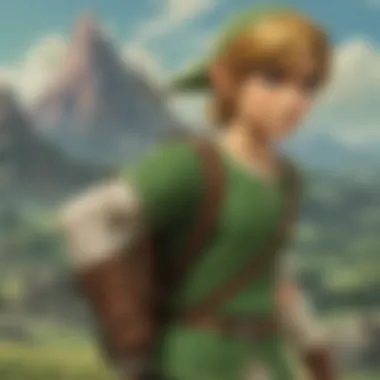
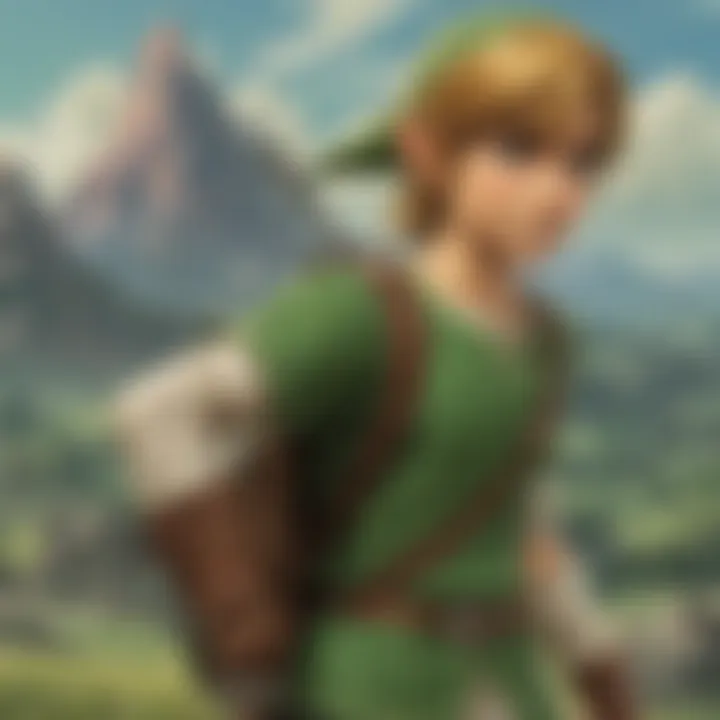
Intro
The world of Zelda games is rich with stories that resonate deeply with players. Central to these narratives is the concept of captured memories, which play a crucial role in unfolding the storyline. This article seeks to explore how these memories shape the overall gaming experience, influencing both emotional engagement and strategic gameplay.
By examining the significance of captured memories, we will underscore their impact on player interactions with the game's lore and characters. We will delve into various aspects of gameplay and narrative that highlight the importance of memories. This exploration extends to key moments within the series that leave lasting impressions on players, thereby enriching the experience in the realm of Hyrule.
We will dissect the various dimensions of captured memories, as presented in the series. From game mechanics and character analyses to lore discussions and gameplay strategies, this article aims to offer a comprehensive understanding of how memories capture the essence of the Zelda story.
Game Reviews
Gameplay Features and Mechanics
Captured memories are more than just a narrative device; they are integrated into the gameplay mechanics in unique ways. Players often encounter memories that reveal important background information about characters and events. These memories enhance the emotional weight of the game and encourage exploration.
In titles like The Legend of Zelda: Breath of the Wild, players can unlock memories through key locations, prompting them to revisit significant moments. This mechanic not only unveils the story but also enhances the immersion.
Storyline and Quests
The storyline is tightly interwoven with the concept of memories. As players progress, they undertake quests that are often tied to these captured moments. The quests not only drive the plot forward but also enrich the player's understanding of character motivations and the overarching narrative.
Some quests, specifically those related to Princess Zelda's journey, reveal how her struggles and triumphs are intertwined with the memories that players uncover. Each memory acts as a puzzle piece, contributing to the larger picture of Hyrule's fate.
Visuals and Sound Design
The depiction of memories in Zelda games is enhanced by striking visuals and evocative sound design. When players view a memory, they are not just experiencing a flashback; they are enthralled by artistic elements that evoke a range of feelings.
The soft colors, gradual camera movements, and background scores work in harmony to create an atmosphere that engages players on an emotional level. The use of sound, in particular, amplifies the nostalgia tied to certain memories, providing a substantial context for the emotional responses of the characters involved.
Comparison with Previous Titles
In earlier Zelda games, the narrative was often conveyed through dialogue and text. However, the newer titles have innovatively transformed how stories are told. Memories allow for a more interactive and personalized storytelling experience.
For instance, in The Legend of Zelda: Ocarina of Time, much of the narrative relies on dialogues to explain the lore. In contrast, the recent titles have shifted towards an immersive exploration of backstories through captured memories.
Character Analyses
Popular Characters Overview
The central characters in Zelda games often have intricate relationships with their memories. Characters like Link and Zelda undergo significant development influenced by the memories they uncover. These memories define their roles within the narrative, making their journeys more relatable and impactful.
Character Development and Backstories
Memories provide insight into each character’s backstory. For example, Zelda's memories reveal her challenges and aspirations, offering players an understanding of her character beyond what is presented in the gameplay. Players witness her growth from a reluctant princess to a vital part of the quest.
Role in the Zelda Universe
Captured memories serve as a pivotal tool in connecting characters. They augment the narrative by illustrating how individual experiences affect interactions among characters. The memories shared between Link and Zelda reveal the depth of their bond, bringing emotional weight to their relationship.
Fan Theories and Speculations
The intricate nature of memories leads to various fan theories. Some enthusiasts posit that memories may have hidden meanings or connections to other timelines within the Zelda universe. Such theories inspire discussions on platforms like reddit.com, allowing fans to analyze the implications of these narrative devices extensively.
Lore Discussions
Mythology and Worldbuilding
The portrayal of captured memories contributes significantly to the lore and mythology of the Zelda universe. Each memory is steeped in historical context, often linking back to ancient texts and artifacts. This deep-rooted lore enriches the player's understanding of the world.
Legendary Items and Artifacts
Within the memories, players often encounter legendary items that carry their own stories. These artifacts become pivotal in understanding the hurdles characters face. The role of these items, such as the Master Sword, is echoed throughout memories, serving as potent symbols of hope and power.
Link to Real-world Mythologies
Elements of Zelda's narratives draw inspiration from real-world mythologies, and captured memories often parallel these themes. The struggles faced by the characters can be seen as reflections of archetypal journeys presented in various cultural myths.
Timeline Placement and Theories
Understanding the timeline placement of each Zelda game adds layers to the narrative defined by memories. Players who explore these timelines can connect the dots between different adventures, sometimes using memories as key clues to unravel chronological sequences.
Gameplay Strategies
Combat Techniques and Tips
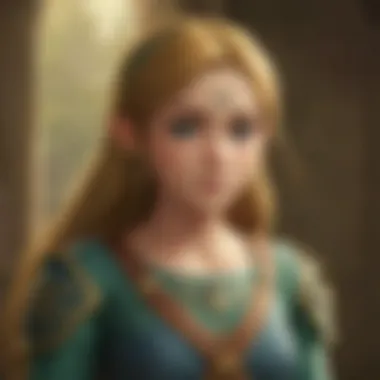
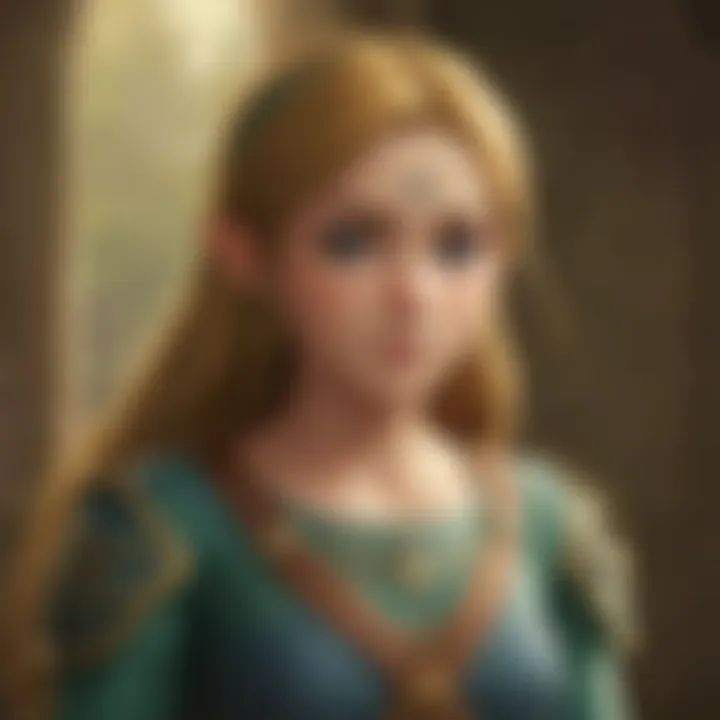
Utilizing the insights gained from captured memories can affect gameplay strategies. Players can determine combat techniques by understanding character strengths and weaknesses portrayed in memories, facilitating more informed gameplay decisions.
Puzzle Solutions and Walkthroughs
Many puzzles in Zelda games can be solved through knowledge gained from memories. Recognizing patterns and information embedded within these memories can assist players in navigating challenges more effectively.
Collectibles and Side Quest Guides
Captured memories provide hints about collectibles and side quests, driving players toward deeper exploration. Players who pay attention to these intricacies can enhance their experiences by uncovering hidden treasures linked to the narrative.
Boss Battles Tactics and Strategies
Insights from memories can influence strategies in boss battles. Understanding the character's motivations and backstories can give players an edge when anticipating enemy behavior or responses during critical encounters.
Understanding Captured Memories
Captured memories in gaming represent a rich and multifaceted concept. They are not merely snapshots of events; they encompass emotions, significance, and deeper narratives that resonate long after the gameplay ends. In the context of the Zelda series, captured memories serve as a narrative device that wraps players into the lore of Hyrule. As players navigate through the vast world created by Nintendo, these memories add layers of meaning and context, making the gaming experience more profound.
The exploration of captured memories allows for an understanding of how players connect emotionally to storytelling elements. These memories often reveal backstories, motivation, and relationships among characters. They shape how players engage with the game, setting up a personal connection that enhances immersion. Without these memories, the narrative would be less vibrant, and the emotional investment would diminish.
Defining Captured Memories in Gaming
In gaming, captured memories refer to specific moments or sequences where events are preserved and can be recalled. These moments are integral to storytelling, providing insight into character development and plot progression. In The Legend of Zelda, players often encounter cutscenes or flashbacks that showcase key events, informing both character motivations and the overarching plot. This form of storytelling creates a sense of continuity and depth in the narrative.
- Character Insights: Memorable scenes often focus on pivotal actions of characters, illustrating their growth or transformation over time. This assists players in understanding character arcs and the thematic elements at play.
- Lore Expansion: Captured memories enrich the lore of Hyrule, offering players a glimpse into historical events and their consequences, thus tying in gameplay with the series' broader narrative.
- Emotional Affinity: When players remember moments of significance, there is often a stronger emotional linkage thereby enhancing their overall experience with the game.
Cognitive Implications of Memory in Gaming
The cognitive implications of memory within gaming are significant. Players utilize their memories to make decisions, solve puzzles, and navigate challenges throughout the gameplay. The ability to recall past events or learned clues influences strategic thinking and problem-solving abilities during crucial moments. In Zelda, where puzzles and exploration are essential components, recalling previously captured memories can aid in overcoming obstacles.
“Memory is not just a file of information; it is a living part of the gaming experience that shapes player interaction.”
Moreover, the representation of memories in gameplay can provoke curiosity and engagement. Players often find themselves searching for clues related to past events to unlock new aspects of the story. This intertwining of memory with gameplay mechanics cultivates an interactive experience that fosters critical thinking and adaptability. As players recall past experiences, their intuition guides their decision-making, making each choice deliberate and impactful.
These elements highlight how understanding captured memories not only deepens appreciation for the narrative complexity of the Zelda series but also enhances the overall enjoyment and engagement with the game.
The Narrative Structure of Zelda
The narrative structure of the Zelda series is essential to understanding the depth of captured memories within its games. This structure goes beyond mere storytelling; it intertwines memory as a crucial element of the gameplay experience. The design of Zelda's narrative establishes a framework that not only supports character development but also enriches the emotional engagement players have with the game world.
At its core, the narrative structure of Zelda is built on the foundation of exploration and discovery. Players journey through Hyrule, encountering various characters and significant events that shape not only the plot but also the protagonist’s growth. Each adventure is layered with intricacies, where the past influences present choices, echoing the importance of memory in gameplay. This intelligent integration encourages players to reflect on their past decisions and the memories they create during their adventures.
The Role of Memory in Storytelling
Memory in the Zelda series serves several pivotal roles in storytelling. First, it aids in the development of character arcs. Characters like Link and Zelda evolve through experiences that resonate with players, highlighting their past struggles, triumphs, and relationships. For example, Link's various trials across different titles often reference his previous adventures, allowing players to draw connections and heighten their emotional involvement.
Additionally, memory contributes to the overarching themes of the series. Concepts of legacy, the cyclical nature of conflict between good and evil, and the passage of time are conveyed through the recollection of past events. This method emphasizes that every decision carries weight, enriching the player's narrative experience.
Key Benefits of Memory in Storytelling:
- Enhanced Emotional Engagement: Players invest in characters' journeys as they witness growth over time.
- Increased Depth of Lore: Reflections on past events add layers to the world of Hyrule, inviting players to explore and speculate.
- Character Development: The narrative structure fosters connection and empathy through shared experiences, allowing players to understand characters on a deeper level.
Key Story Arcs and Their Memories
The Zelda series is characterized by several key story arcs, each deeply interconnected with captured memories. These arcs create a network of recollections that players navigate, often linking back to pivotal moments in the series.
One prominent arc is the fight against Ganon, which appears in numerous titles. Each encounter with Ganon carries weight as players recall the battles and hardships faced previously. Such memories serve to propel the narrative forward, emphasizing the ongoing struggle between light and darkness.
Moreover, the theme of Princess Zelda's fate is a recurring thread that binds the series together. Her role as a guardian, ally, and sometimes captive illustrates a tapestry of memories that players experience alongside Link. This relationship evolves but is always rooted in the past, shaping individual stories within the larger narrative.
By carefully crafting these arcs, the Zelda series ensures that captured memories are not just background elements but are integral to the gaming experience. The memories reinforce the importance of past actions and relationships, making every interaction meaningful.
"In the world of Hyrule, every memory matters. They are the threads that weave the fabric of each story, making them unforgettable."
In summary, the narrative structure of Zelda offers a rich exploration of memory, influencing not just the story itself but also the emotional resonance players experience as they undertake their journeys through Hyrule.
Character Perspectives and Memories
The perspectives of characters in the Zelda series play a crucial role in shaping the narrative. Each memory captured within the game reflects significant experiences that have shaped the world of Hyrule. Understanding these perspectives allows players to connect deeply with the story and its characters. The importance of these memories is not limited to just entertainment. They serve as a vessel for emotional engagement, enabling players to empathize with the characters’ struggles and victories.
Memories within Zelda not only illuminate the backgrounds of main characters like Link and Zelda but also provide context for supporting characters. This deeper understanding enriches the player’s experience, allowing them to appreciate the layers of Hyrule's narrative. Every encounter with captured memories invites players to pause and reflect on the journey they are on, reinforcing the idea that every character’s contribution matters in the overarching story.
Link: The Hero's Journey
Link, the central figure of the series, epitomizes the hero's journey framed by personal memories. His adventure is not just a fight against evil but also a quest for identity. Each memory he captures reflects a fragment of his past, often tied to pivotal moments that define who he is.


Link's experiences resonate with themes of courage, resilience, and sacrifice. For example, in The Legend of Zelda: Breath of the Wild, the memories he uncovers reveal his relationship with Princess Zelda and the challenges he faced against Calamity Ganon. These memories contribute to Link's growth as a character and enhance the emotional gravity of his quest.
Zelda: The Guardian of Hyrule
Zelda herself is a complex character whose memories illustrate her dual role as a princess and a guardian. Her captured memories often reveal her struggles against the burdens of destiny, emphasizing her growth from a passive figure into an active force within the narrative.
In various titles, such as The Legend of Zelda: Ocarina of Time and Breath of the Wild, Zelda’s memories showcase her dedication to protecting Hyrule. These insights highlight her strength as a character and her intrinsic connections to Link, creating a shared narrative experience that engages players emotionally.
Supporting Characters and Their Contributions
Supportive characters play essential roles in the Zelda series, and their memories are critical to understanding the broader narrative. Characters like Impa, Navi, and others provide context and background that enrich Link's journey. Their captured memories often showcase past events that hint at Hyrule's lore and mythology.
These characters enhance gameplay by offering guidance, lore, or support during challenges. By uncovering their memories, players discover hidden facets of the narrative that expand the world beyond the main storyline. For example, Impa's memories in Breath of the Wild present insights into the Sheikah tribe’s history, giving a richer context for the game's setting.
In addition to narrative depth, these perspectives also touch on themes of friendship, loyalty, and sacrifice. They underscore the idea that every character, no matter how small, has a story worth telling. Collectively, these memories reinforce the interconnectedness of all characters in Hyrule, showing how each contributes to the unfolding of the larger narrative.
Gameplay Mechanics and Memory
The interplay between gameplay mechanics and memory is a crucial aspect of the Zelda series. It allows players to engage with the narrative on a deeper level. Memory does not just serve as a backdrop; it actively influences decisions, enhances the emotional weight of encounters, and shapes the overall experience. By embedding memory into gameplay, the developers create layers of meaning that resonate with players long after they put down the controller.
How Memory Influences Player Decisions
Memory in Zelda influences choices in significant ways. When players encounter a challenging section, they often rely on past experiences to navigate obstacles. This reliance can manifest in several forms:
- Strategic Choices: Players use previous knowledge to make informed decisions. For instance, recalling the mechanics of a particular enemy can shape how they approach a new encounter.
- Emotional Connections: Memories of past victories or losses can affect mood and engagement during gameplay. A player who remembers completing a difficult puzzle might approach new challenges with more confidence.
- Narrative Resonance: As players progress, they will often reflect on previous events and choices, creating a continuous narrative loop. This reflection enriches the storytelling and makes each decision feel impactful.
Effective use of memory in gameplay mechanics leads to a more immersive experience. Players do not just play for the moment; they invest emotionally and intellectually in their journey through Hyrule.
Memories in Puzzle Solving
Puzzle-solving in Zelda is intimately tied to memory. The puzzles are often constructed not just as standalone challenges but as experiences that echo throughout the game. Players must remember certain elements to succeed. Here are key considerations:
- Recalling Patterns: Many puzzles involve recognizing patterns from earlier sections. Players who can trace elements back in their mind will find solutions more easily.
- Thorough Exploration: Experiencing various parts of the world yields valuable insights. Players will notice how previous engagements can aid in future puzzle-solving.
- Utilizing Red herrings: Some puzzles intentionally mislead. Players need a keen memory to differentiate between necessary tasks and distractions, balancing risk with potential reward.
In summary, memory enhances puzzle-solving in Zelda, making each interaction with the game world feel purposeful. It deepens the connection between players and the game's complex narrative, creating a richer experience overall.
Emotional Resonance of Captured Memories
Captured memories play a pivotal role in the emotional landscape of the Zelda series. These memories encapsulate key moments that players experience, shaping their connection to the characters and the world of Hyrule. The emotional resonance found in these memories enhances gameplay, making players feel invested in the story and its characters. The memories serve not only as narrative tools but also as emotional touchstones that bind players to the virtual universe.
By emphasizing the relationship between memory and emotion, Zelda games deepen the player's experience. This connection can invoke feelings of nostalgia, joy, regret, or even sorrow, as players navigate through the plots and character arcs. The memories often come with vivid contexts, providing players insight into character motivations and the overarching story.
Nostalgia and Player Connection
Nostalgia is a powerful emotion that can heighten a player's engagement with the game. The Zelda series expertly leverages this feeling through the thoughtful integration of memories. Consider how Link’s journey often mirrors the player’s own experiences, creating a shared emotional connection. Moments captured in memory not only tell a story but also evoke past experiences for the player.
A notable example includes the memories Link obtains in The Legend of Zelda: Breath of the Wild. Each memory reveals a fragment of the past that resonates deeply with players, encouraging them to reflect on their own journeys. As players delve into these memories, they often recall their previous interactions with the Zelda franchise, creating a strong sense of familiarity.
Memorable Moments in Zelda Lore
Zelda is rich with memorable moments that define its lore and player experience. Some of these memories contribute significantly to shaping the narrative and emotional depth. For instance, the poignant flashback scenes in The Legend of Zelda: Breath of the Wild serve to remind players of the bond between Link and Zelda. These poignant memories highlight their dedication and struggles against the backdrop of Hyrule’s imminent peril.
"Memories are not just remnants of the past; they are the threads weaving players into the fabric of the story."
Each moment holds significance, often representing critical plot points that influence player decisions and character arcs. Through well-crafted memories, the game fosters a sense of belonging and involvement, inviting players to emotionally invest in outcomes. The interplay between these moments and the main narrative enriches the overall experience, ensuring that the emotional weight of captured memories lingers long after the game has ended.
The Evolution of Memory in Zelda
The topic of memory's evolution in the Zelda series is crucial to understanding how its narrative has transformed over time. As each title is released, the integration of capture memories has changed, reflecting both advancements in technology and shifts in gameplay design. This evolution highlights the series’ ability to adapt and resonate with players on a deeper emotional level.
Changes in Narrative Techniques Across Titles
The Zelda series has experienced significant shifts in its narrative techniques with each installment. Earlier games often relied on simpler storytelling methods. The focus was on straightforward quests and adventures, with limited character development and backstory. For example, The Legend of Zelda: A Link to the Past introduced a more complex plot with multiple locations and a larger world to explore. In this title, references to past events began to emerge, effectively weaving the larger tapestry of Hyrule's lore.
As the series progressed into the 3D era with The Legend of Zelda: Ocarina of Time, narrative techniques became much richer. The concept of captured memories took a more pronounced role. Players experienced the story not just through dialogue but through environmental clues and character interactions. The game's non-linear structure allowed players to piece together memories actively. This interactive approach to storytelling encouraged players to engage emotionally with both Link and Zelda, drawing a deeper connection to their pasts.
This trend continued with The Legend of Zelda: Breath of the Wild, which transformed how narratives are told in gaming. The game features a seamless world where players can uncover memories at their own pace. The use of flashback sequences allows for emotional resonance, presenting Link's past in a way that influences player experience in the present. This flexibility and immersion encourage players to remember and reflect on their journey through Hyrule, fortifying their bond with the storyline.
- Increased character depth over time leads to immersive storytelling.
- Non-linear narratives foster player engagement.
- Environmental storytelling enhances memory capture.
Technological Advancements and Memory Capture
Technological advancements in the gaming industry have significantly influenced the methods of memory capture in Zelda games. Early consoles had limitations that restricted narrative complexity; however, with the advent of systems like the Nintendo 64 and later, the Nintendo Switch, developers could implement broader storytelling techniques.

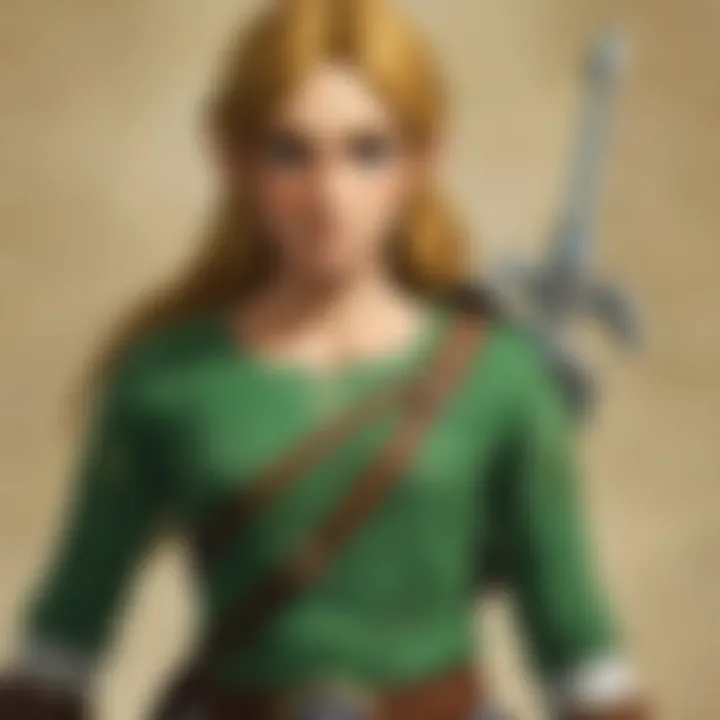
In Ocarina of Time, the transition to 3D graphics allowed for richer visuals that complemented the narrative structure. This enhanced memory capture by enabling players to visually experience past events through cinematics and in-game lore. As technology progressed, memory representation matured.
In The Legend of Zelda: Majora's Mask, the three-day cycle mechanic forced players to remember and revisit events, enhancing strategic gameplay while reinforcing the significance of captured memories. The necessity of remembering crucial events in a compressed timeframe deepens the game’s narrative curve.
Recent titles, such as Breath of the Wild, emphasize open-world mechanics, inviting players to explore and interact with memories throughout Hyrule. Advanced graphics and physics engines work to create immersive environments that change based on player actions, allowing for a narrative experience that feels personal and significant.
"The evolution of memory capture in Zelda reflects both the advances of technology and a deeper understanding of narrative complexity, leading to richer player experiences."
In summary, from simple narrative foundations to the immersive storytelling of today, the evolution of memory in the Zelda series showcases the importance of integrating gameplay mechanics with story to enhance the overall experience for players.
Cultural Impact and Legacy of Zelda's Memories
The cultural impact and legacy of captured memories in the Zelda video game franchise is profound. Beyond mere gameplay, these memories have shaped the way players understand and interact with the world of Hyrule. The Zelda series has redefined storytelling in video games, creating a blueprint that many developers follow today. The memories are not just relics of the past; they are integral to the fabric of the entire narrative. These elements contribute to a deeper emotional connection for players, thus enhancing their overall experience.
Influence on the Gaming Industry
The influence of Zelda's memories extends well into the gaming industry. Many modern games draw inspiration from Zelda’s storytelling techniques, particularly concerning the use of memories as a narrative device. By weaving memories into gameplay, developers have created a more engaging experience. This approach allows players to explore characters' backstories and motivations in a way that feels organic.
For example, titles like The Last of Us and God of War have incorporated similar memory mechanics to enhance emotional depth. Players find themselves reflecting on past events rather than simply progressing through a story. This trend towards integrating memories has become a hallmark in storytelling across various genres.
- Narrative Complexity: Zelda's method of presenting memories adds layers to its narrative. Players see events unfold from different perspectives, making them question the reliability of memory itself.
- Player Agency: Games influenced by Zelda often allow player choices to impact how memories are revealed or interpreted, drawing players deeper into the narrative.
- Legacy of Innovation: It firmly established the notion that video games can be powerful tools for storytelling, paving the way for narratives that go beyond action or adventure.
Fandom and Community Interpretations
Another significant aspect of the cultural impact is how fandom and community interpretations of Zelda's memories have evolved. Dedicated fans contribute to an ongoing dialogue about the game's lore and character histories. They often analyze every detail, connecting dots that may not be explicitly stated in the games.
Forums, fan fiction, and comprehensive theories play a role in how players perceive memories. This community engagement strengthens the bond that players have with the series, as they share insights and perspectives.
- Fan Theories: Fans continuously develop theories regarding characters, plot points, and the implications of memories. This analysis enrichens the gameplay experience.
- Community Creations: From artwork to fan-made videos, community content widely disseminates and interprets memories, allowing for unique and varied representations of the series' lore.
- Conventions and Events: Fan gatherings often focus on discussing the memories portrayed in the games. Such interactions foster a sense of belonging and shared passion within the community.
"The heart of Zelda lies in its memories; it’s what binds fans together in celebration of a collective experience."
The legacy of Zelda's memories is a testament to the power of storytelling within gaming. They have indeed changed not just how narratives are experienced, but also how communities form around shared memories, continuing to influence both the industry and its players.
Future Directions in Narrative Memory
As the Zelda franchise continues to evolve, the exploration of narrative memory remains an essential topic. Future iterations of the series can be defined by their approach to memory in storytelling. This will likely affect how new players interact with the lore and how returning fans connect with familiar themes. The incorporation of cutting-edge technology and a refined narrative structure has the potential to enhance the storytelling experience.
Potential Storylines and Character Developments
In considering potential storylines, one can speculate that future installments of Zelda might explore deeper aspects of memory. Character development becomes crucial in conveying these themes. For Link, confronting his own lost memories can lead to a richer narrative. Imagine a storyline where Link has to piece together fragments of his past to unlock hidden powers or abilities. This approach could offer a fresh perspective on the traditional hero's journey.
For Princess Zelda, future narratives could delve into her memories as a guardian of Hyrule. Her experiences could influence her actions and decisions throughout the game. This may involve flashbacks that enrich her character and deepen player empathy.
Other supporting characters could also receive similar treatment. Their unique memories could intertwine with the main narrative, creating side quests that provide context and enrich the primary story arc. This interconnectedness of memories can cultivate player engagement, making their journey through Hyrule feel more personal and consequential.
Innovations in Memory Representation
Innovation will be pivotal in how narrative memory is represented in future Zelda games. One avenue is the use of advanced gaming technologies like virtual reality. Such tools could allow players to experience memories first-hand, enhancing emotional impact. Imagine stepping into Link's memories, navigating through past events in a fully immersive way. This can create a more profound connection between players and the story.
Moreover, leveraging artificial intelligence to adapt storytelling based on player choices could redefine how memories are incorporated. Memories could emerge dynamically based on the player's decisions, creating a unique narrative experience for every player. This method allows the memories to reflect the player's journey, transforming the storytelling process into a more personalized experience.
The potential for using nonlinear storytelling techniques should not be overlooked. Players could experience different facets of memory in varied orders, leading to a more complex understanding of the narrative. Utilizing these innovations could reshape the Zelda series, making the concept of memories pivotal to both character development and overall narrative.
"The evolution of narrative techniques in the Zelda series highlights the possibilities of future storytelling approaches."
By embracing these directions, the Zelda franchise can enhance its narrative depth, providing players with both a thought-provoking and emotionally resonant experience. As the series looks forward, the role of captured memories remains central to its legacy.
End
In dissecting the intricate tapestry of captured memories within the Zelda narrative framework, we draw attention to several key elements that showcase their profound significance. Captured memories serve as more than mere embellishments; they act as pivotal components that enhance storytelling depth, foster player engagement, and contribute to the emotional resonance of the game. As players traverse the vast landscapes of Hyrule, these memories becomes anchors that tie together the narrative threads.
Summarizing the Role of Captured Memories
Captured memories offer players a reflective glimpse into the past, beckoning them to explore the history intertwined with Hyrule’s landscapes and its inhabitants. This interaction enriches the player's understanding and connection to the plot. Key examples include flashbacks that reveal crucial character motivations or deep emotional attachments. The function of these memories extends beyond nostalgia; they serve as catalysts for decision-making and moral choices throughout the game.
- Enhancing Character Development: Each memory reveals layers of character complexity, illustrating personal growth or changes in their journeys. This depth resonates with players, making them invest in outcomes that may affect these characters.
- Promoting Player Engagement: Players are often called to revisit memories as part of quests, creating moments of reflection and re-evaluation where they piece together narrative elements.
Overall, memories imbue the game with a sense of continuity. They create a narrative fabric that strengthens the player's experience by linking past events to present choices and consequences.
Looking Ahead to Future Zelda Titles
The evolution of captured memories in future Zelda titles poses exciting possibilities. Continuing trends in gaming often seek integration of advanced storytelling methods to deepen emotional connections. Future installments may take such approaches further by:
- Innovating Memory Representation: Enhanced visual storytelling could allow players to experience memories in more immersive ways, creating interactive scenarios that affect gameplay more dynamically.
- Exploring Non-linear Narratives: Implementing branches in storylines based on memory interactions can provide varied outcomes, tailored to individual player experiences.
- Technological Advances: With advancements in game design and artificial intelligence, there is potential for creating more dynamic memory sequences that adapt as the player progresses.
These future directions indicate that the role of captured memories in Zelda will only expand, promising a deeper engagement with the lore, characters, and the narratives we cherish. Enhancing emotional ties between players and the rich landscapes of Hyrule is a trajectory worth exploring.
"Memories deeply impacts the player's journey, shaping not only their decisions but their emotional ties as well."
As we look ahead to future titles, we can anticipate an even richer tapestry of storytelling, rooted firmly in the memories that define and propel the ongoing legacy of the Zelda series.







